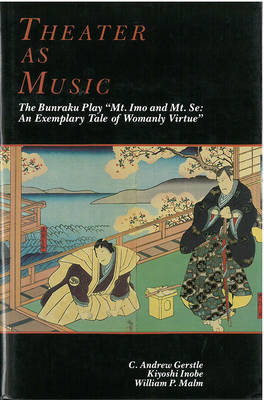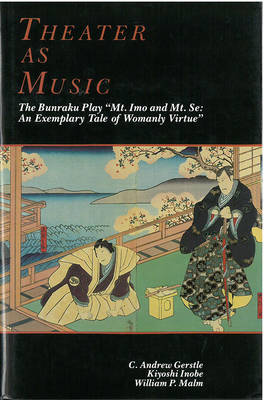
- Afhalen na 1 uur in een winkel met voorraad
- Gratis thuislevering in België vanaf € 30
- Ruim aanbod met 7 miljoen producten
- Afhalen na 1 uur in een winkel met voorraad
- Gratis thuislevering in België vanaf € 30
- Ruim aanbod met 7 miljoen producten
Zoeken
Omschrijving
Bunraku drama has been recognized by many Western artists and scholars form early in this century as a fascinating theatrical tradition. While many have acknowledged the genius of this dramatic form, few have attempted to analyze the tradition in depth. This book is the first attempt to examine Bunraku in performance and to bring together musical, dramatic, and historical analyses into one study. The three authors focus on the famous "Mountains Scene" (Yama no dan), the third scene of the third act of Mt. Imo and Mt. Se: An Exemplary Tale of Womanly Virtue (Imoseyama onna teikin, 1771) by Chikamatsu Hanji, to examine its place in the history of Bunraku and to analyze it as an example of a living tradition. By focusing on one text and on the music of one particular performance, the authors illuminate the rich musical and dramatic conventions that lie at the foundation of today's performance. Theater as Music, with its articles, translations, text, and glossary of terms, is a complete guide to Bunraku as a performing tradition and will be useful to anyone interested in music or theater.
Specificaties
Betrokkenen
- Auteur(s):
- Uitgeverij:
Inhoud
- Aantal bladzijden:
- 302
- Taal:
- Engels
- Reeks:
- Reeksnummer:
- nr. 4
Eigenschappen
- Productcode (EAN):
- 9780939512386
- Verschijningsdatum:
- 1/04/1990
- Uitvoering:
- Hardcover
- Formaat:
- Genaaid
- Afmetingen:
- 157 mm x 234 mm
- Gewicht:
- 879 g

Alleen bij Standaard Boekhandel
+ 118 punten op je klantenkaart van Standaard Boekhandel
Beoordelingen
We publiceren alleen reviews die voldoen aan de voorwaarden voor reviews. Bekijk onze voorwaarden voor reviews.











